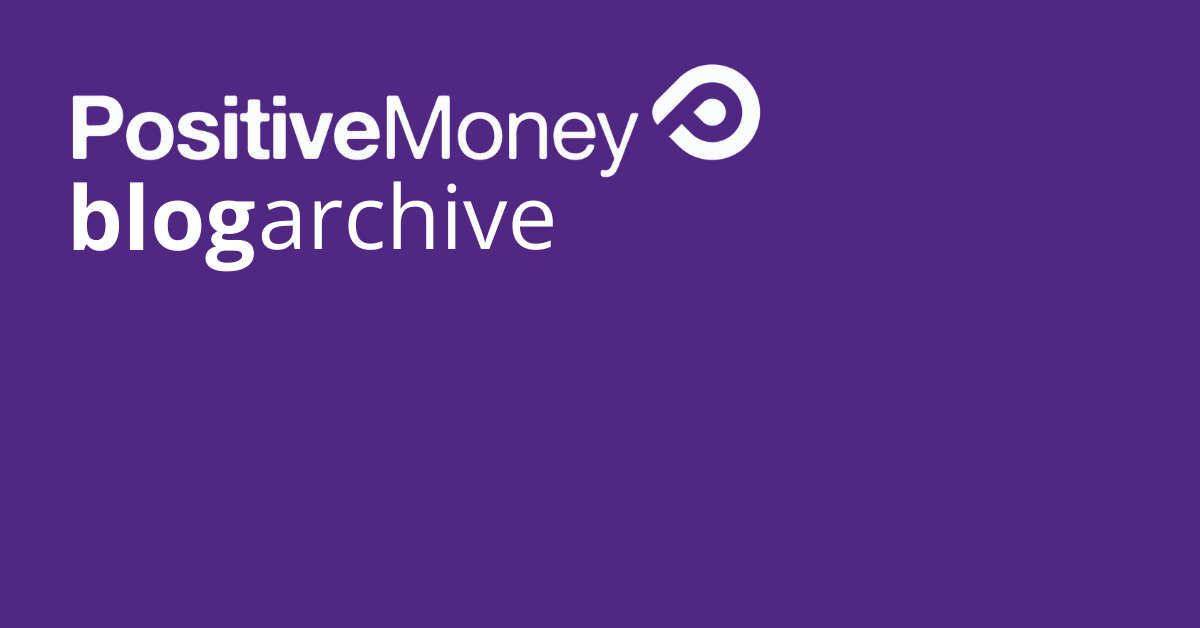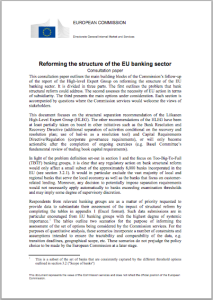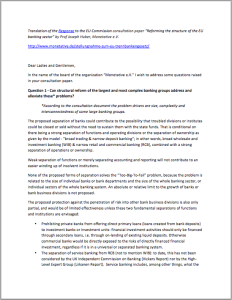Reforming the structure of the EU banking sector


In May this year, the EU Commission published “Reforming the structure of the EU banking sector”, a consultation paper which represents a follow-up to the recommendations made by the Liikanen High-Level Expert Group (the “HLEG”) in its report of October 2012, setting out different options for structural reform of the European banking sector (structural reform proposals similar to ring-fencing the retail bank operations of large banks in the UK).
Our sister organisation in Germany, Monetative, have submitted their response to this consultation paper.
Here you can read the Monetative response in German.

Here you can read their response translated to English.
Many thanks to our volunteers Martin Ternes and Simon Robinson for the translation!
And below you can read also “translation into plain English” by Michael K., guest author:
The story so far:
Some forces in the EU are trying to sell us a pseudo-separation of investment banks. Buyer beware!
Question: Do these reforms solve anything?
In a nutshell: YES, if…
Long answer: For the reforms to solve anything, they must create a new playing field in which floundering banks are not rescued with OUR money. When things go pear-shaped, and (part of) a bank can no longer pay its bills (“insolvency”), it must be shut down or sold off. There’s a big IF attached.
The big IF: Are the investment units really separated? Or is it just an accounting fiddle?
Look out for phrases such as “separate ownership” and “separation of operations”. They are good signs.
“Separate accounting and reporting” on the other hand equals “fig leaf”.
Does this end too-big-to-fail?
Not a sausage.
[Adapted from Wikipedia: a bank is too-big-to-fail when its collapse would also kill the economy. Therefore, these banks have to be rescued. It’s a free insurance policy.]
Until we change the way in which our money is created, or limit the size of banks, not to mention the size of the banking sector in relation to our entire economy, too-big-to-fail will never die.
The EU Paper ignores this.
Next Question: Does the Paper have a solution to prevent risk spreading?
Answer: Yes…partly.
If we stop banks from creating money, we are safe.
(In technobabble: Banks should not be allowed to “offer direct primary loans”, “loans created from bank deposits”, to investment banks or units.)
Lending out money that already exists (“secondary loans”) is not a problem.
Failure to take into account when, where and how money is created is a recipe for disaster – both today, as well as in the system proposed by this Paper!
Learn these three terms, and you are one step ahead of both the UK Independent Commission on Banking (Vickers Report), as well as the High-Level Expert Group (Liikanen Report) – ready?
What the Paper calls “service banking” = the actual payment systems, cash and electronic transfers
RCB = retail and commercial banking (what we commonly call “banks”; they create money)
WIB = wholesale and investment banking (really dodgy; creating money to play with oneself)
Creating a firewall around WIB is a no-brainer – it goes without saying. But there is still an obscene lack of policy makers working on ways to separate service banking from RCB.
This is a bit like making the question of whether we want to have roads dependent on the health of Toyota. Again, the key phrase to look out for is “separate ownership.”
However, in the current fractional reserve banking system it is only partially possible to detach service banking. RCBs would still create money (“bank deposits”, German: Giralgeld). And although WIBs would not, there is no reason to assume that this isn’t where some of the bank-created money will end up..
Conventional wisdom has been to pump money into the system through quantitative easing.
Thus, the Ultimate Question is “How to create money?”
This is where Positive Money, and the many similar organisations around the world come in.
Last question: Is there a sunny side?
YES there is! Some of the proposed changes (“Combining Medium&Medium”) could perhaps help slightly.
However, they require massive bureaucracy that wouldn’t be needed in a “Sovereign Money” or “Positive Money” system. The EU Paper shows our regulators’ awareness of the problem, but also their reluctance to live up to the challenge. Unless there is more pressure from the population, new laws will provide nothing more than lip service. Stick to business as usual if you believe bankers to be naturally prudent and responsible towards
the common good.